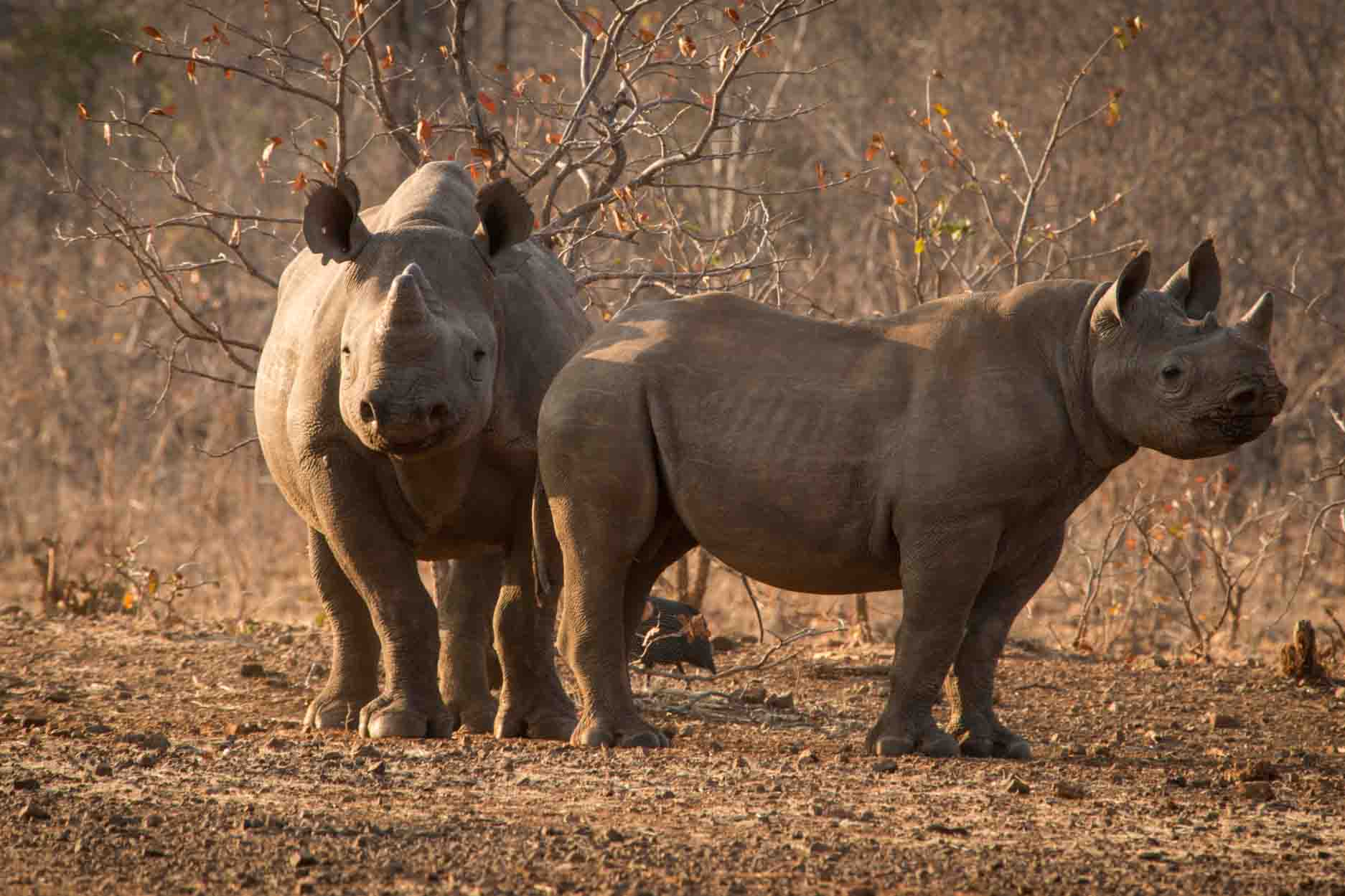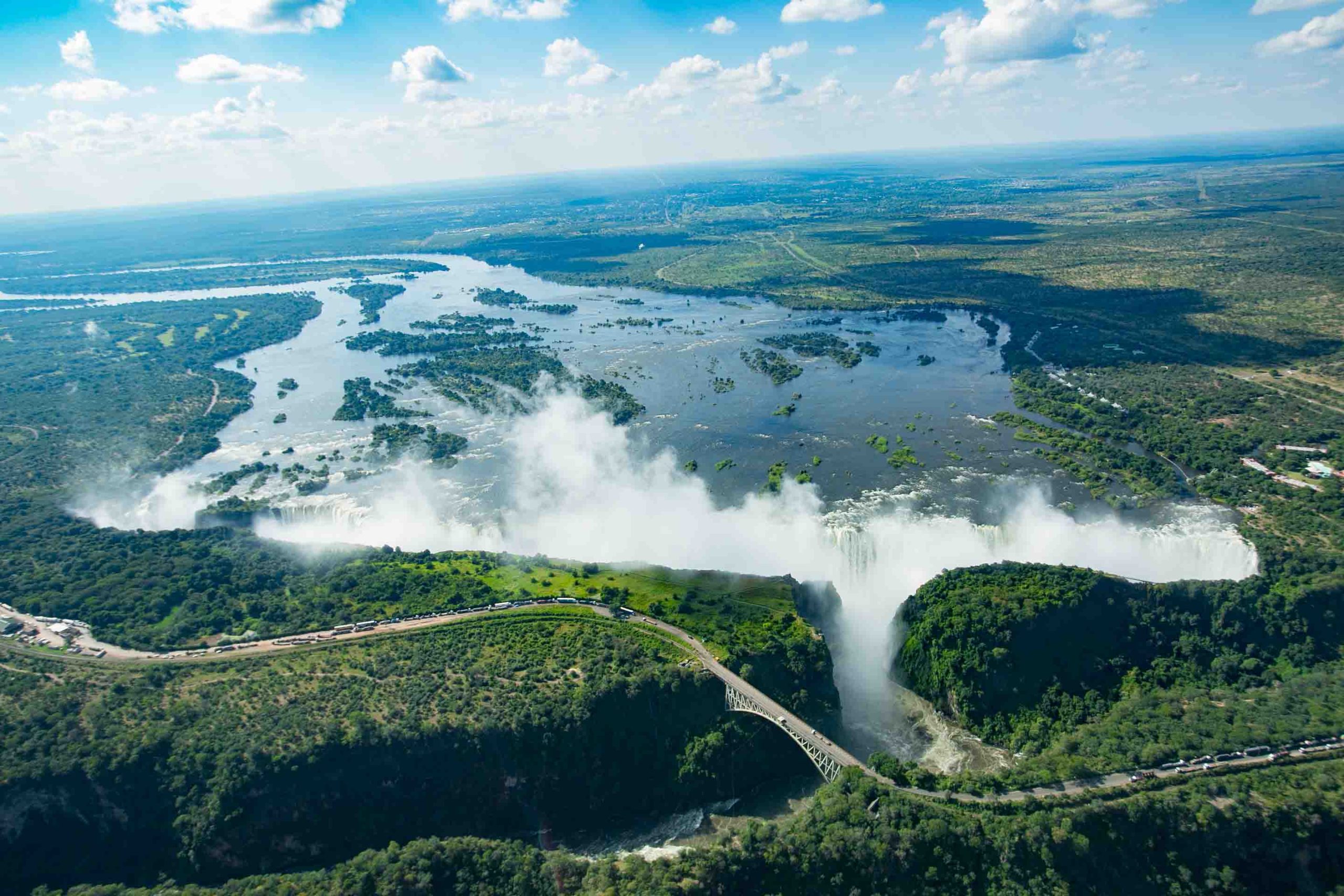ZIMBABWE
Synonymous with resilience, having weathered decades of socio-economic turmoil, this dynamic country boasts great depths of wildlife, landscapes and culture.
Parks
What can I expect?
Zimbabwe is a country of incredibly rich natural and cultural heritage and is home to some of the largest and most important conservation areas for African wildlife. Elephant, lion, leopard, buffalo, hyena, cheetah and many more thrive in this country and the national parks work tirelessly to ensure the future of these animals.

Skillful guides and rangers are always at the ready and are eager to share their love of their country and the nature it encompasses with you. This hospitality extends to the camps and lodges where you will find luxurious accommodations and friendly professional staff who go above and beyond to make your stay as special as possible.
Travel in Zimbabwe is generally safe and you are unlikely to encounter any problems along the way. It is important to remember that the country has a long history of struggle and inequality. At times people have experienced shortages of food, fuel and other resources which can be reflected in the appearance of some of the smaller villages. This should not deter you as the incredible spirit of Zimbabwe prevails, making it a magnificent place to visit and an unforgettably diverse holiday
destination. Your visit and support plays an integral role in the continued recovery and sustainability of this beautiful country.
the human history
Zimbabwe is a landlocked country that shares borders with South Africa, Mozambique and Zambia. With a population of approximately 14 million people, Zimbabwe is rich in cultural history and has 16 official languages, with English, Shona and Ndebele being the most common of these.

Human settlement in Zimbabwe dates back approximately 100 000 years, and the discovery of arrowheads and cave paintings indicates that the earliest inhabitants were the San people. Bantu people first arrived in the region during the Bantu expansion.
Shona speaking societies originated in the Limpopo valley in the 9 th century, and the Zimbabwe plateau became the centre for Shona states early in the 10 th century. The establishment of trade lines with Arab merchants along the Indian Ocean coastline aided in the development of the Kingdom of Mapungubwe in the 11 th century. They were the first of a number of states that traded gold, copper and ivory for cloth and glass.
Read More
The Kingdom of Zimbabwe began to eclipse Mapungubwe from 1300 to 1600, but gave way to the Kingdom of Mutapa from 1450 to 1760. Mutapa reached near collapse early in the 17 th century when the Portuguese began a series of wars to monopolise trade routes. As the presence of Europeans increased a new interior Shona state emerged known as the Rozwi Empire. The Rozwi were able to expel the Portuguese, but were defeated around 1838 by the Zulu Ndebele tribe who settled in the southwest region of Zimbabwe which became known as Matabeleland.
European colonists arrived in the 1880s lead by Cecil John Rhodes, who received a mining rights concession from the Ndebele in 1888, before sending a pioneer column north into Shona territory. Rhodes organised the land to disproportionately favour Europeans and many indigenous people were displaced. Southern Rhodesia was annexed by the United Kingdom as a self-governing British colony in 1923. From 1953 until 1963 Northern Rhodesia (now Zambia), Southern Rhodesia and
Nyasaland (now Malawi) were consolidated under British rule as the Central African Federation, but the union was dissolved amid growing African nationalism.
A Unilateral Declaration of Independence from the United Kingdom was issued on 11 November 1965 by Rhodesian Prime Minister, Ian Smith, going against the British policy of “no independence before majority rule”. Guerilla war ensued, resulting in negotiations to establish a biracial democracy that would allow the white population to maintain some control. Elections were upheld in April 1979 when Bishop Abel Muzorewa was named Prime Minister.
On 11 December 1979 Rhodesia resumed its status as a British colony, paving the way for constitutional independence by means of the Lancaster House Agreement, which was signed on 21 December 1979. The first democratic elections took place in February 1980 and Zimbabwe was formally granted independence in April 1980.
conservation efforts
The Zimbabwe Parks and Wildlife management Authority is the driving force behind conservation efforts in Zimbabwe and has the authority to manage and maintain the wildlife resources of Zimbabwe.

The estates managed by this authority make up approximately 13 percent of Zimbabwe’s land area. This authority also extends to the management of all wildlife on both communal and
private properties, which allows it to hold private landowners to account in terms of the welfare of wild animals. A large part of this responsibility is anti-poaching efforts, issuance of hunting permits and licenses as well as problem animal control.
In Mana Pools the African Wildlife Foundation works with the Zimbabwe Parks and Wildlife Management Authority to enhance the capacity and management of game rangers.
Read More
They have built rapid response units, trained rangers to use ecological monitoring systems and introduced full-time anti-poaching experts to the park. Radio systems have also been upgraded to improve
communications between rangers and anti-poaching units, a key step in the fight against poachers in Zimbabwe. The foundation is also working to address the unsustainable use of natural resources in and around the park with support from the European Union, by promoting conservation friendly land use.
In Gonarezhou a trust has been entered into by the Zimbabwe Parks and Wildlife Management Authority and the Frankfurt Zoological Society. The Gonarezhou Trust is responsible for the management and conservation of the Gonarezhou National Park. During the tenure of the trust the park will aim to become financially self-sustainable and ensure the long-term viability of conservation efforts by reinvesting the income of the park into its management. One of the initiatives introduced into Gonarezhou is the use of anti-poaching dogs that are specifically trained
to track people who have entered the park illegally or to track poachers following an incident. These dogs are also able to track for ivory, weapons and ammunition and play a vital role in the fight against elephant poaching in the park.
These efforts among others, aim to engage with local communities to conserve the natural heritage of Zimbabwe and ensure its sustainability for years to come. An incredible result of some of these efforts is evidenced by an increase in the number of black rhino in Zimbabwe, an important step towards saving the species.
the country’s highlights
Zimbabwe has five UNESCO World Heritage Sites, three of which are Cultural Heritage Sites, namely the Great Zimbabwe National Monument, the Khami Ruins National Monument and Matobo Hills, and two of which are Natural Heritage Sites, namely Mana Pools National Park, Sapi and Chewore Safari Areas and Victoria Falls (Mosi-oa-Tunya).

The Great Zimbabwe National Monument and the Khami Ruins National Monuments were both named as Cultural Heritage Sites in 1986. Great Zimbabwe was built between 1100 and 1450 AD and covers an area of nearly 80 hectares in the lowveld of Zimbabwe. The city was an important centre for trade from the Middles Ages onwards. The ruins of Great Zimbabwe represent an important part of Bantu history between the 11 th and 15 th centuries and according to legend was the capital of the Queen of Sheeba.
Read More
Khami, an area of great archaeological interest, developed in the mid-16 th century after Great Zimbabwe was abandoned. Objects from China and Europe have been discovered at the site, indicating that Khami was an important trade centre. Located near the city of Bulawayo, the
property extends over an area of around 108 hectares and was the capital of the Torwa dynasty before it was abandoned in the 19 th century during the Ndebele incursions.
The third Cultural Heritage Site, Matobo Hills, was inscribed as a UNESCO World Heritage Site in 2003 and is located just south of Bulawayo. The distinctive rock formations in this area have been
linked to human occupation since early in the Stone Age, throughout early historical times and occasionally thereafter. The boulders also feature a number of rock paintings and Matobo Hills continues to be a place of vast cultural importance to local communities.
In 1984, the first of Zimbabwe’s Natural Heritage Sites, the Mana Pools National Park, Sapi and Chewore Safari Areas, was inscribed by UNESCO. The area is renowned for its dramatic landscapes, including floodplains and large cliffs that overlook the Zambezi River. The ecological processes of the region are also of great importance, and it is home to an incredible variety of wildlife including buffalo, elephant, cheetah, crocodile and leopard.
Inscribed by UNESCO in 1989, the Victoria Falls, or Mosi-oa-Tunya in Shona, are among the most magnificent waterfalls in the world. The great plumes of mist that spray up as a result of the Zambezi River cascading down 108 metres (354 feet) across a width of over 1 700 metres (5 500 feet) can be seen from more than 40 kilometres (25 miles) away.
Zimbabwe is a country of expansive natural beauty and boasts a number of additional national parks and conservancies including Hwange, Gonarezhou and Lake Kariba amongst others.
